How the Financial Times has rolled with the times
- Published
Pearson is selling the Financial Times to Japan's Nikkei Group for £844m.
Yet at a time when readers and advertisers are turning increasingly to the internet, where news is often free, does a newspaper, which charges £2.50 per paper edition, still have a promising future?
For more than a century already the FT has been learning to roll with the times.
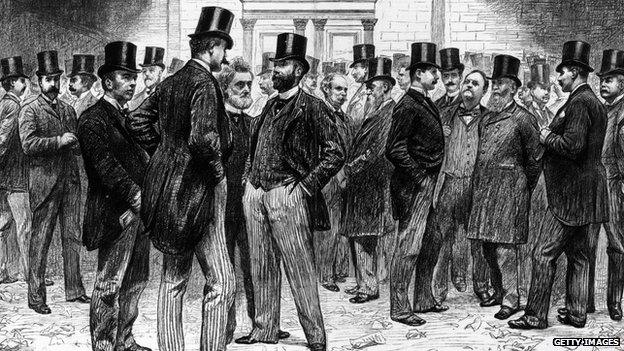
The early days
When the Financial Times was founded through the merger of two other papers in 1888 it aimed to be the friend of "the honest financier" and "the respectable broker". It was initially a four page journal targeting city clientele.
Its owners decided to turn it pink either as a stroke of marketing genius to make it stand out from its rivals or because unbleached paper was cheaper, depending on which historian you believe.
Early on, a boom in South African gold mining shares helped it establish its financial niche with readers and advertisers.
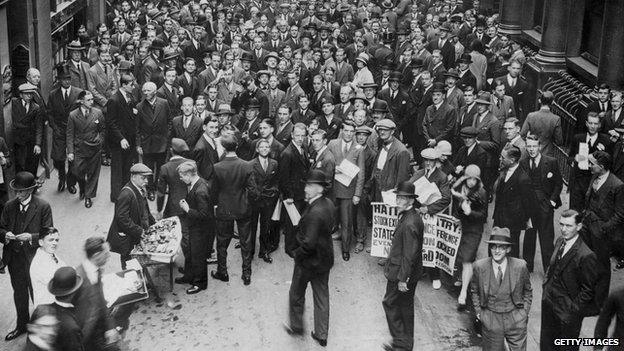
As the market crashed in 1929 more people than before wanted financial information
After the war
In 1957 the paper was taken over by then oil-to-media company, Pearson, which brought with it additional capital. The stock market boom of the fifties and early sixties helped boost circulation and establish it as one of the UK's national quality papers.
William Rees-Mogg and Nigel Lawson joined the paper and to coin Harold Macmillan's phrase Britain and the Financial Times "had never had it so good".
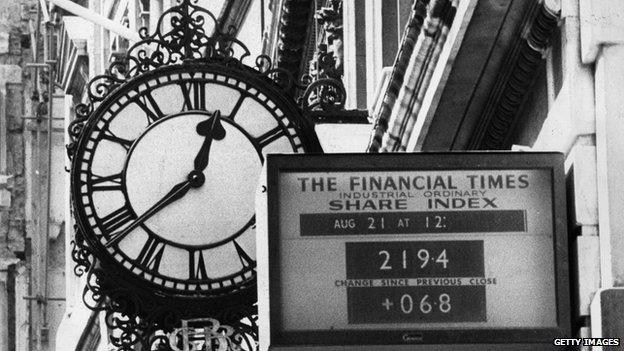
As the FT expanded its coverage to include the arts and public affairs, Britain's other papers began to catch on to the advantages of publishing sections on business and finance and competition got stiffer.
Tougher times
The paper's most difficult period came in the late 1970s and early 1980s.
The UK's economy was stagnating and the print unions were making newspaper publishing tough.
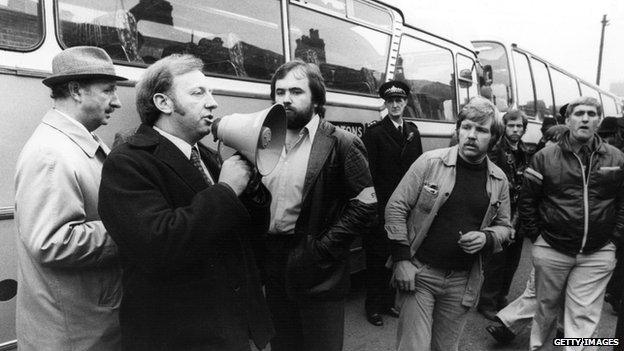
Yet according to John Lloyd, the paper's industrial editor at the time Arthur Scargill, leader of the striking British miners' union, used to read the FT in the morning before he turned to the communist Morning Star "to get the facts".
Globalisation
The Financial Times has always had ambition to be a truly international newspaper, at one point publishing five international editions in continental Europe, the US, Asia and the Middle East.
In 2000 the FT even started publishing a German language edition, Financial Times Deutschland, but it never managed to make a profit and Pearson sold the FT's 50% stake to its German partner in 2008.
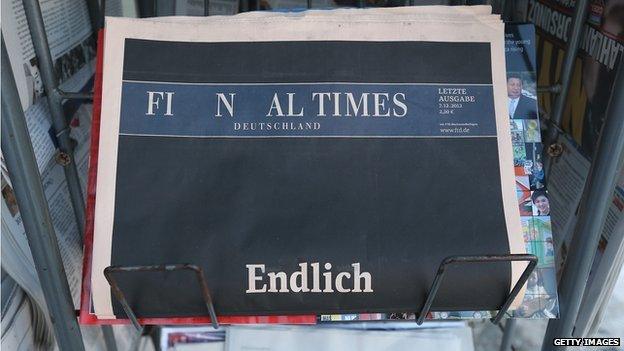
The final edition of FT Deutschland was published 7 Dec 2012
And now chief executive John Ridding says they're now back to producing what's essentially a single, global product.
"There's a little bit of what the editor refers to as lipstick and make-up on the front page but fundamentally the same stories appear in all of our editions."
FT today
Nowadays the newspaper forms the core of the FT Group which in 2013 made a profit of £55m, the last year its accounts were published separately.
Last year, for the first time, the newspaper was profitable before advertising, that is simply on the cover price.

"The issue we all face is the issue of habit. It used to be that the FT or another paper would turn up on your doorstep," says chief executive John Ridding.
"With digital delivery that has all been disrupted. The challenge we face is how do you recreate that sense of habit."
The FT has been one of the more successful paper publishers to help readers make the shift to a digital habit.
Its total circulation has risen to 737,000 with digital representing 70% of that.
People may not always be physically picking up the pink'un but the access to specialist information and expert analysis is enough to persuade them to part with the £5.35 a week subscription fee.
- Published23 July 2015
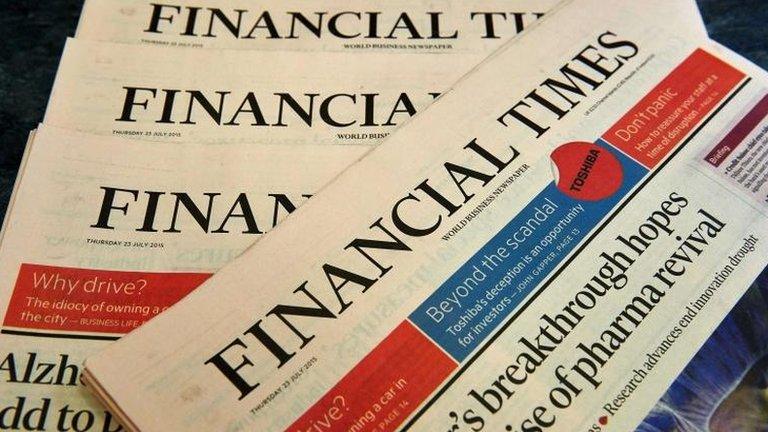
- Published1 July 2015
